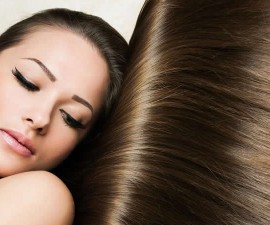Hair loss can be expected at the age of 50 or older. For such case, it is a normal part of aging. Changes in hair with age include color change (going gray), thinning, and dryness. However in a few cases, it can strike earlier. For instance, there are also some young men (before 30) who also experience thinning hair for several causes.
The cause of thinning hair in young men may be hereditary
Male pattern baldness (androgenetic alopecia) is the most common form of hair loss that affects men. Even it affects half of men by 50 years.
Male pattern baldness can start at any ages after puberty. But many times, it is most common for this hair loss problem to start in a man 20’s (especially at late 20s or early 30s).
It is thought as a result from genetic traits. Yap, it is usually hereditary though not in all cases. In a few cases, men have it even though they don’t have a family history of the same problem.
Typically, men with male pattern baldness start the problem with thinning hair on the temple (receding hairline) or /and on the crown. The thinning hair on the temple will cause M-shape over time. At advanced stage, this M-shape may meet to the thinning hair on the crown, forming horseshoe shape (U-shape) – see this picture!
Male pattern baldness is likely to cause a permanent baldness, as the name suggests. However not all cases end with a complete baldness, sometimes it may only cause a partial baldness.
Early treatments for male pattern baldness are available. However the treatment is optional. Some men are likely to ignore the problem since it is usually harmless. The treatment is usually only for cosmetic reasons.
But if you do concern about it and want to treat it, early treatment is important to prevent it from getting worse. There are some treatments to choose from. For a comprehensive guide of these treatments, see this section!
In addition, there is also a condition called female pattern hair loss (androgenetic alopecia in women). For women with it, they usually don’t experience receding front hairline. The thinning hair is likely to affect their entire scalp, though eventually it may be more noticeable on the crown.
It may pinpoint to particular health conditions
Excessive hair loss before 30 is not common. Sometimes this premature hair loss may be caused by certain medical conditions. One of common types of hair loss associated with certain medical conditions in young adults is alopecia areata.
It is typically characterized by small round patches of baldness (the size of these patches are about a large coin). The patches are usually found on the scalp, but sometimes they may also affect anywhere on the body.
Alopecia areata can occur in men of all ages, but it is commonly found at the ages of 15-19 (teenagers and young adults). The good news, the problem usually improves once the underlying cause is addressed. In many cases, it will grow back in a few months.
It can be caused by a number of different causes. It can be hereditary, too – though not always. But in many cases, it is associated with a problem of the immune system.
In general, alopecia areata is more common in people with autoimmune disorders such as diabetes, hyperthyroidism, and Down’s syndrome.
Other types of hair loss can occur due to other medical conditions. In fact, hair loss also can be an early sign of many conditions such as anemia, high fever & flu, severe infection, and trichotillomania (a disorder that causes you to repeatedly pull your own hair).
The use of some medical treatments could be other possible causes
Anagen effluvium is a kind of hair loss that often occurs due to the use of certain medication. It is widespread hair loss that not only affects your scalp, but may also include your body or even face.
The following medical treatments can result in hair loss:
- Cancer treatments such as chemotherapy and radiation therapy.
- The use of some birth control pills.
- Medicines used in hormone replacement therapy.
- Some antidepressants carry the risk of hair loss, too.
- Some medicines for hypertension (high blood pressure), heart problems, and arthritis.
Sometimes, the use of recreational medicines such as anabolic steroids can also contribute to cause hair loss.
Thinning hair in men before 30 may also be caused by lifestyle factors
A common form of hair loss that is linked to lifestyle factors is telogen effluvium. It is usually characterized by widespread thinning of the hair and less likely to cause specific bald patches. Since it is usually caused by reversible cause, it is relatively easier to treat.
It can affect anyone, including for young men. The following lifestyle factors can contribute to cause telogen effluvium:




